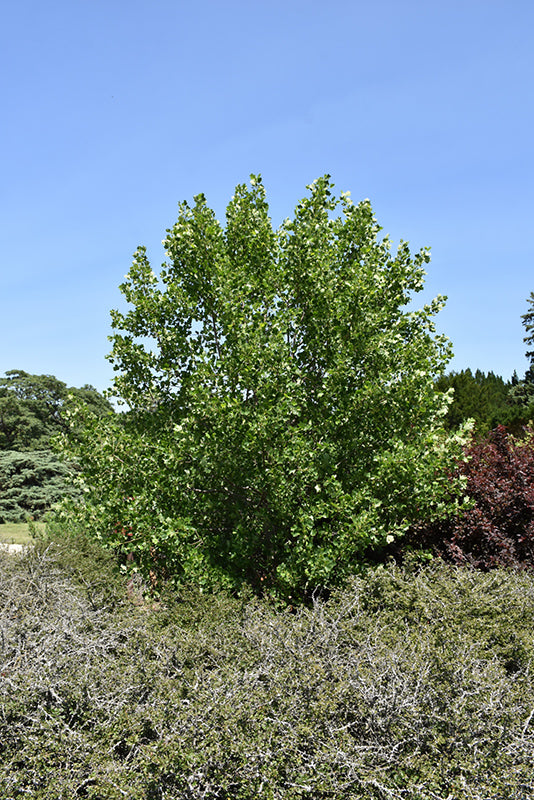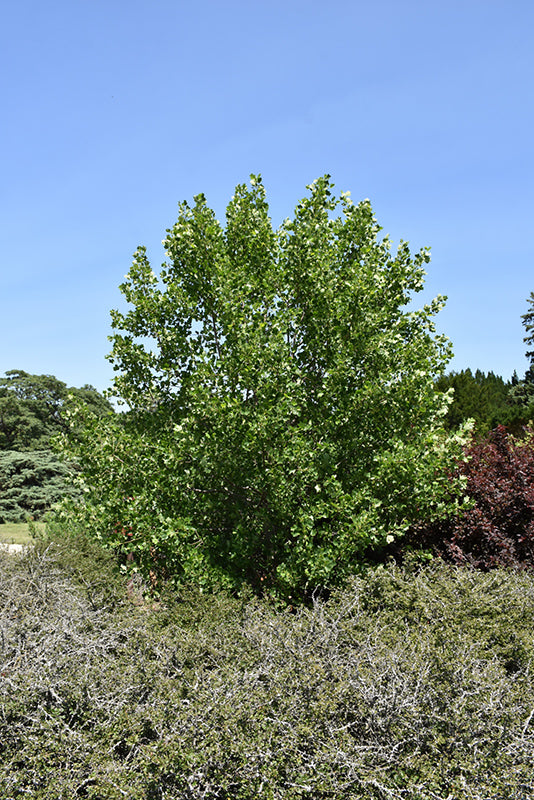Volunteer Tuliptree has buttery yellow cup-shaped flowers with yellow eyes and orange centers held atop the branches from mid to late spring. It has emerald green deciduous foliage. The square leaves turn outstanding shades of gold and yellow in the fall. The furrowed gray bark is extremely showy and adds significant winter interest.
Landscape Attributes
Volunteer Tuliptree is a deciduous tree with a strong central leader and a shapely oval form. Its average texture blends into the landscape, but can be balanced by one or two finer or coarser trees or shrubs for an effective composition.
This is a high maintenance tree that will require regular care and upkeep, and is best pruned in late winter once the threat of extreme cold has passed. Deer don't particularly care for this plant and will usually leave it alone in favor of tastier treats.
Planting & Growing
Volunteer Tuliptree will grow to be about 20 feet tall at maturity, with a spread of 12 feet. It has a low canopy with a typical clearance of 4 feet from the ground, and is suitable for planting under power lines. It grows at a fast rate, and under ideal conditions can be expected to live to a ripe old age of 100 years or more; think of this as a heritage tree for future generations!
This tree should only be grown in full sunlight. It prefers to grow in average to moist conditions, and shouldn't be allowed to dry out. It is not particular as to soil pH, but grows best in rich soils. It is quite intolerant of urban pollution, therefore inner city or urban streetside plantings are best avoided. This is a selection of a native North American species.
Details
Botanical Name
Liriodendron 'Volunteer'
Common Name
Volunteer Tulip Tree
Hardiness Zone
- 5a
Appearance
Max Height
20 feet
Max Spread
12 feet
Plant Form
- Oval
Foliage Colour
- Emerald Green
Fall Colour
- Gold and Yellow
Flower Colour
- Yellow
Edible
Edible Component
Edible Harvest Period
Edible Use
Fruit Colour
Growing
Flowering Period
Mid to Late Spring
Moisture
Average to Moist
Sunlight
Full Sun
Maintenance
High
Deer Resistance
YES
Get more information about this plant and others with our comprehensive plant finder tool.




